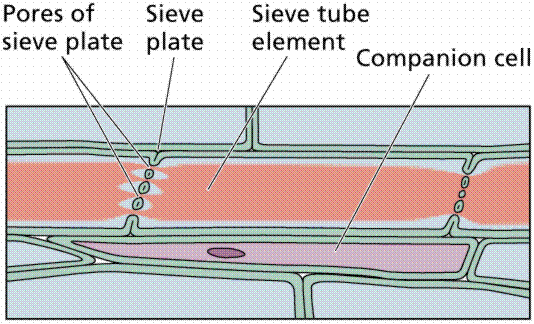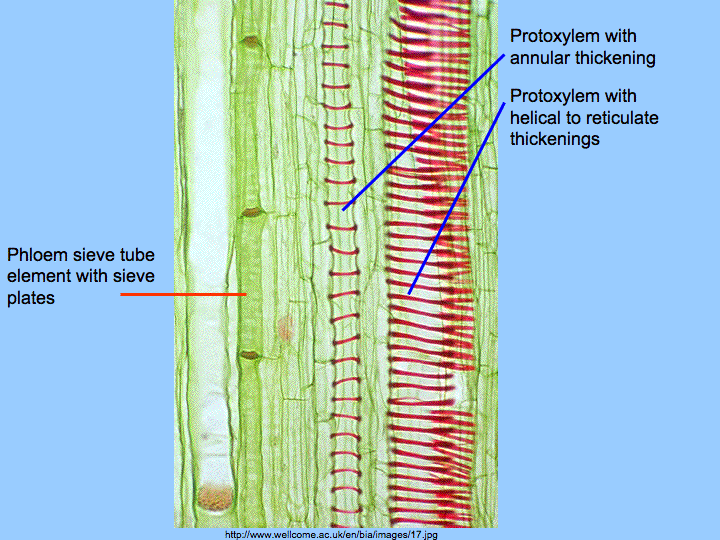Back to 9 2 assessment statements
9.2.11 Outline the role of phloem in active translocation of sugars (sucrose) and amino acids from source (photosynthetic tissue and storage organs) to sink (fruits, seeds, roots).
- In contrast to Xylem, Phloem move organic molecules from the source to the sink.
- A source is a plant organ that a net producer of sugar either by photosynthesis or by the hydrolysis of starch.
- A sink is a plant organ that uses or stores sugar. Roots, buds, stems, seeds and fruits are all sugar sinks.
The movement of organic molecules in plants is called translocation. The organic molecule are dissolved in water and the solution is referred to as phloem sap.
- A phloem sap is made up of sucrose, amino acids, plant hormones, and mRNA.
So how does phloem move the phloem sap from the source to the sink?
The movement of phloem sap is explained through the pressure-flow hypothesis
- Loading of sugar into the sieve tube at the source. This reduces the relative water concentration in the sieve tube members causing osmosis from the surrounding cells
- The uptake of water causes positive pressure in the sieve tube that results in a flow of the phloem sap
- This pressure is diminished by the removal of the sugar from the sieve tube at the sink. The sugars are changed at the sink to starch. Starch is insoluble and exerts no osmosis effect.
The sieve plate function is not clear. Sometimes the pores are filled (viz callose) and there seems to be an associated protein that can be made to tightly fit in the poor - or change its shape and release the poor. The mechanism is partly understood, but the purpose is currently unknown (see University of Hamburg's Botany hypertext.)

http://www.uic.edu/classes/bios/bios100/lectf03am/sucrosepump.jpg
Structure of Phloem (diagram)
<http://www.clt.astate.edu/mhuss/toppage6.htm>

Micrograph of phloem and seive plate ends
<http://www.uic.edu/classes/bios/bios100/lectf03am/phloem.jpg>

Phloem longitudinal section diagram
image from <http://www.emc.maricopa.edu/faculty/farabee/BIOBK/BioBookPLANTANAT.html>

Sieve plate
Image from <http://www.emc.maricopa.edu/faculty/farabee/BIOBK/BioBookPLANTANAT.html>

Micrograph of xylem and phloem showing relative positions. (Note that position is reversed (left or right) relative to diagram below!)
image from <http://plantphys.info/plant_physiology/basiccytology1.shtml>

- Xylem recycles the relatively pure water by carrying it from the sink back to the source.

http://www.uic.edu/classes/bios/bios100/lectf03am/translocation.jpg&imgrefurl=http://www.uic.edu/classes/bios/bios100/lectf03am/lect20.htm
<http://www.uic.edu/classes/bios/bios100/lectf03am/phloemwater02.gif>
- objective lvl1-Define the concept of the source and the sink.(2)
- ObL1- List the components of a phloem sap. (4)
Comments (0)
You don't have permission to comment on this page.